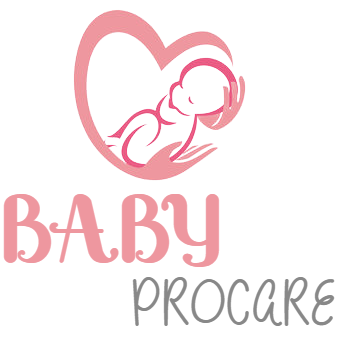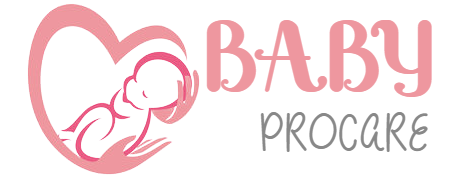Teething is an important milestone in a baby’s development, but it can be a challenging time for both infants and parents. As a parent, it is crucial to understand the signs and symptoms of teething to provide the necessary care and support for your little one. In this comprehensive guide, we will discuss the common teething symptoms that infants experience, such as drooling, irritability, and gum sensitivity. We will also explore effective strategies to alleviate discomfort and promote your baby’s overall well-being during this teething phase. Whether you are a first-time parent or have experienced teething before, this article aims to equip you with the knowledge and resources to recognize and manage infant teething symptoms effectively.
What is infant teething?
Infant teething refers to the process in which a baby’s teeth start to emerge through the gums. It is a natural and normal developmental milestone that usually occurs during the first year of a baby’s life. Teething can be a challenging and uncomfortable time for both babies and their parents, as it can cause various symptoms and behavioral changes.
When does teething typically start?
Teething typically starts between the ages of 4 to 7 months, although it can vary from baby to baby. Some infants may experience teething symptoms as early as 3 months, while others may not start teething until they are 8 or 9 months old. The timing of teething is influenced by genetic factors and can also be influenced by the order in which the teeth erupt.
What are the common signs of teething?
Teething can cause a range of symptoms in infants. While some babies may experience all of these symptoms, others may only show a few. Common signs of teething include:
- Excessive drooling: Teething stimulates the production of saliva, leading to increased drooling. You may notice your baby’s chin and clothing becoming wetter than usual.
- Irritability and fussiness: The discomfort of teething can make babies irritable and fussy. They may cry more frequently and have difficulty sleeping.
- Swollen or tender gums: The gums around the emerging teeth may become swollen, red, and sensitive. Babies may try to alleviate the discomfort by chewing on objects or their fingers.
- Loss of appetite: Babies may temporarily lose their appetite or show less interest in breastfeeding or bottle-feeding due to the discomfort caused by teething.
- Increased biting and chewing: Teething infants often have an urge to bite and chew on objects to relieve the pressure on their gums. They may start biting their toys, fingers, or even their caregivers.
- Changes in sleeping patterns: The discomfort of teething can disrupt a baby’s sleep patterns. They may have trouble falling asleep or wake up more frequently during the night.
- Mild temperature elevation: Some babies may experience a slight increase in body temperature while teething, but it should not exceed 100.4°F (38°C). If the temperature rises above this threshold, it is important to consult a healthcare professional.
Remember, every baby is unique, and their teething experiences may vary. It is essential to provide comfort and support to your teething baby during this phase by offering teething toys, gently massaging their gums, and maintaining good oral hygiene. If you have concerns about your baby’s teething symptoms or their overall well-being, consult a pediatrician for personalized advice and guidance.
How to Recognize Teething Symptoms
Teething is a significant milestone in a baby’s life, but it can also be a challenging time for both infants and their parents. During this period, babies experience various physical and behavioral changes that can sometimes be confusing for parents to identify. By understanding the common signs of teething, parents can provide appropriate care and support to their little ones. In this article, we will explore the physical symptoms, behavioral changes, and signs to watch out for when your baby is teething.
Physical Symptoms of Teething
When a baby is teething, there are several physical symptoms that may become evident. These symptoms can vary from baby to baby, but some common physical signs of teething include:
- Drooling: Excessive drooling is one of the most apparent physical symptoms of teething. You may notice your baby’s chin and clothing constantly wet due to increased saliva production.
- Swollen Gums: As the new teeth start to push through the gums, you may observe redness and swelling in the baby’s gum area. This discomfort can cause your baby to feel irritable and restless.
- Chewing and Biting: Babies often try to alleviate the discomfort by chewing or biting on objects. You might notice your baby gnawing on toys, their fingers, or even your fingers to relieve the pressure on their gums.
- Flushed Cheeks: Some babies may develop flushed cheeks during teething. This redness is typically temporary and results from increased blood flow in the gum area.
Behavioral Changes During Teething
Along with the physical symptoms, teething can also bring about behavioral changes in infants. These changes are a result of the discomfort and pain associated with teething. Here are some behavioral changes you might notice when your baby is teething:
- Irritability: Teething can make babies more irritable due to the discomfort they experience. Your baby may become fussier and cry more frequently than usual.
- Sleep Problems: The discomfort of teething can also disrupt your baby’s sleep patterns. You may find that your baby has difficulty falling asleep or wakes up more frequently during the night.
- Loss of Appetite: Babies may experience a temporary loss of appetite during teething. The pressure on their gums can make feeding uncomfortable, leading to a decrease in their interest in eating.
- Increased Sucking: Some babies may exhibit a stronger urge to suck on objects or their thumbs to soothe their gums. This increased sucking can be a natural coping mechanism for teething discomfort.
Signs of Teething to Watch Out For
Recognizing the signs of teething is essential for parents to provide appropriate care and comfort to their baby. While every baby is different, here are some common signs that indicate your baby might be teething:
- Excessive Drooling: As mentioned earlier, increased drooling is a typical sign of teething. If you notice your baby drooling more than usual, it could be an indication that their first teeth are on their way.
- Gum Swelling and Sensitivity: When your baby’s gums appear swollen and seem to cause discomfort when touched, it’s likely that teething is occurring.
- Frequent Biting or Chewing: Babies often seek relief by biting or chewing on objects. If your baby is continuously gnawing on things or showing a strong urge to bite, it could be a sign of teething.
- Changes in Sleeping and Eating Patterns: Teething can disrupt your baby’s regular sleep and eating routines. If you notice sudden changes in their sleep or appetite, teething might be the cause.
- Irritability and Fussiness: Teething can make babies more irritable than usual. If your baby seems more fussy and cranky without any apparent reason, teething could be the underlying cause.
By recognizing these symptoms and signs of teething, parents can better understand their baby’s needs and provide appropriate care during this challenging time. Remember, each baby is unique, and while teething can be uncomfortable, it is a temporary phase that will pass.
Tips for soothing teething discomfort
Using teething toys and cold objects
Teething toys and cold objects can provide much-needed relief for infants experiencing teething discomfort. Here are some tips for using them effectively:
- Teething toys: Look for teething toys that are specifically designed for infants. These toys are usually made of soft, BPA-free materials that are safe for babies to chew on. The texture of the toy can help massage the gums and provide relief. Keep the teething toy in the refrigerator for a few hours before giving it to your baby as the cold temperature can help numb the gums and reduce inflammation.
- Cold washcloth: Wet a clean washcloth with cold water and then place it in the refrigerator for a short time. Once chilled, give it to your baby to chew on. The cold temperature can help soothe inflamed gums and provide temporary relief from teething discomfort.
Applying gentle pressure and massages
Applying gentle pressure and performing massages on your baby’s gums can help alleviate teething discomfort. Here’s how you can do it safely:
- Clean hands: Before touching your baby’s gums, make sure to wash your hands thoroughly to avoid introducing any bacteria or irritants.
- Gentle pressure: Use your clean finger or a clean, damp washcloth to apply gentle pressure on your baby’s gums. You can do this by rubbing the gums in a circular motion or by gently massaging the area where the teeth are erupting. The pressure can help alleviate pain and provide relief.
Providing chilled or frozen foods
Chilled or frozen foods can offer relief to teething babies, as the cold temperature can numb the gums and reduce inflammation. Here are some ideas for safe and soothing foods:
- Chilled fruits: Cut up fresh fruits like bananas, apples, or watermelon into small, manageable pieces. Place them in the refrigerator for a while to chill. The coolness of the fruits can provide comfort to your baby’s gums while also offering a nutritious snack.
- Frozen breast milk or formula: Pour expressed breast milk or formula into a clean, BPA-free teething ring or ice cube tray. Place it in the freezer until it solidifies. The frozen milk can provide a soothing and safe option for your teething baby to chew on.
Remember to always supervise your baby while they are chewing on chilled or frozen foods to prevent choking hazards. Additionally, consult with your pediatrician for further guidance on suitable foods for your baby during the teething phase.
Recognizing infant teething symptoms is crucial for parents and caregivers to understand the changes and challenges their little ones may experience during this developmental stage. By being aware of common teething signs such as increased drooling, irritability, and difficulty sleeping, parents can provide necessary support and comfort to their teething babies. It is important to remember that teething is a natural process and each child may exhibit different symptoms and coping mechanisms. If parents have concerns or questions about their baby’s teething symptoms, it is always best to consult with a pediatrician or healthcare professional for guidance and reassurance.


